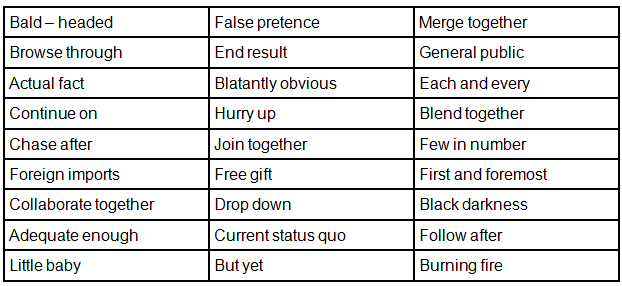Sentences Tips and Tricks for Government Exams
Identification of the concept
Generally while answering a question of sentence improvement, one or most probably two rules are out of place. Hence it is your first job to identify what is wrong and why. Check carefully the time indicators (before, after, during, etc.). This will help you to spot the verb tense and help structure the answer too.
Similar or Alike Options
Sometimes to trick into wrong track, almost all the options seems alike or similar. Make sure to re read the options thrice and fit it into the sentence. However, even if all the sentences are alike, there might be a chance that none of are correct. So be cautious in such situations.
Balancing the options equally
While answering, we normally tend to go with the first answer without looking through the others because that seemed the best, but it is not. Keep an eye on all the options and then tread carefully.
Read the non-underlined part
The non – underlined part might seem useless sometimes but that is not the case always. It might have vital hints or errors that can help to choose the correct option. So look and read thrice.
The shorter, the wiser
Shorter options are always a go to because they are precise and right. However, longer options are only added to increase confusion, so they will not save your time in processing but also in answering.
Substitution is always effective
It is a smart idea to read the statement along with the answer option before you mark your chosen answer. In effect, if you read it a second time after the right insertion, it will be perfect. Sometimes rules fail to work and hence the answer comes out wrong. So, make sure that the expression makes sense.
Listen to the sentence if it all sounds too complicated. Say the sentence in your mind, in other words, and choose the alternative that sounds better to your ears.
The Technique of Elimination
Elimination techniques come to the rescue when you’re stuck with multiple options, multiple errors and grammatically incorrect sentences. So to ease the situation, use this elimination technique to get a crisp answer.
- In the first step, do not delete choices of idioms or pronoun ambiguity. This only pose a concern where the context of the word is changed.
- The options that have words with ‘ing’ generally fall under the wrong category.
- To complicate it more, sometimes pair words such as ‘not only…but also, no sooner…than’ are used wrongly to confuse.
And lastly, do not get stuck with one option. If it at all sound too confusing or complicated, play with the other options and find the one that suits right to your ears.

Solved Examples
Type 1. Subject-Verb Agreement: The subject-verb agreement rule says that if the subject in the sentence is in the singular form then the verb will also be singular form only. Likewise if in the sentence the subject is in the plural form then the verb will also be in plural form only.
Type 2. Parallel Elements: Sometimes in sentence there are many ideas which are same to each other. These ideas should be presented in the same grammatical form.
Type 3. Pronoun Reference Error: In pronoun reference error some words are used at noun’s place. These used words are known as pronoun. See the below given sample for more understanding.
Type 4. Changer/Modifier: As we see from the name, changers are the words or phrases which modify the given words in the question which ultimately changes the construction of sentences. Let’s understand the same with an example.
Type 5. Redundancy: In redundancy type, the same information is used twice or thrice with the use of different word. As per the rules of redundancy any idea should not be repeated again and again. Generally people do use redundant information which is not incorrect, but in real sense they contain unnecessary words, which can be avoided.
Some commonly used redundant phrases:

Type 6. Wording: Under sentence construction problem, wording plays an important role. A wrong use of word may make the whole sentence wrong. Mistakes are mostly done with the use of words that sound similar such as: principal & principle. If you know the meaning of words you can solve the problems easily without any error.
|
66 videos|253 docs
|





















